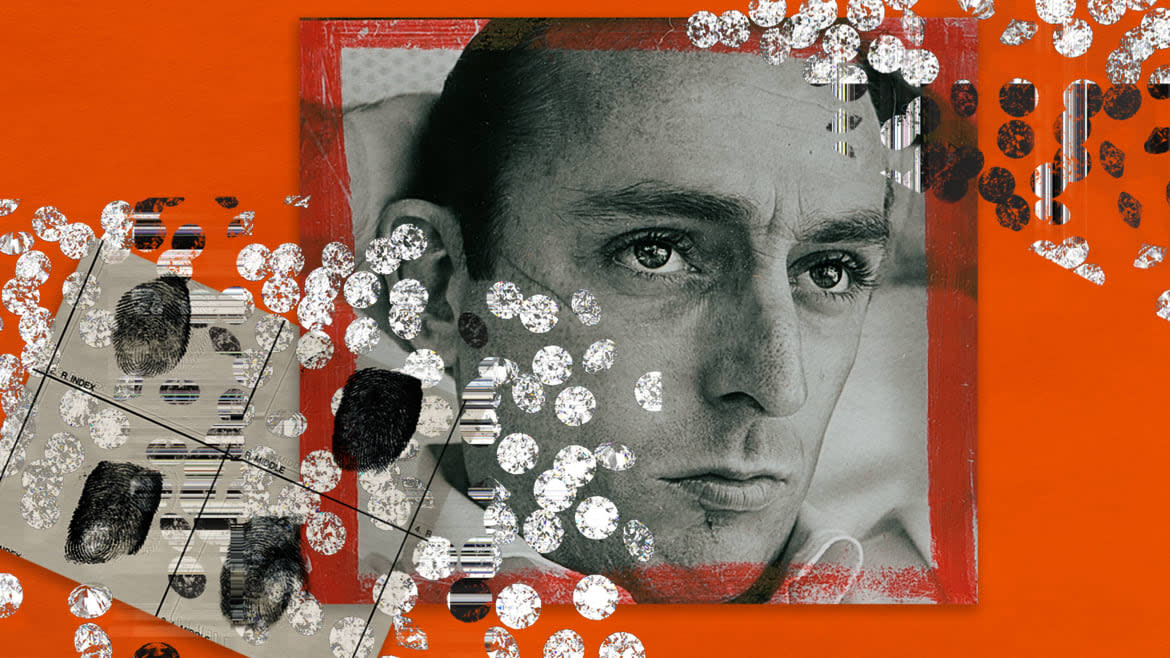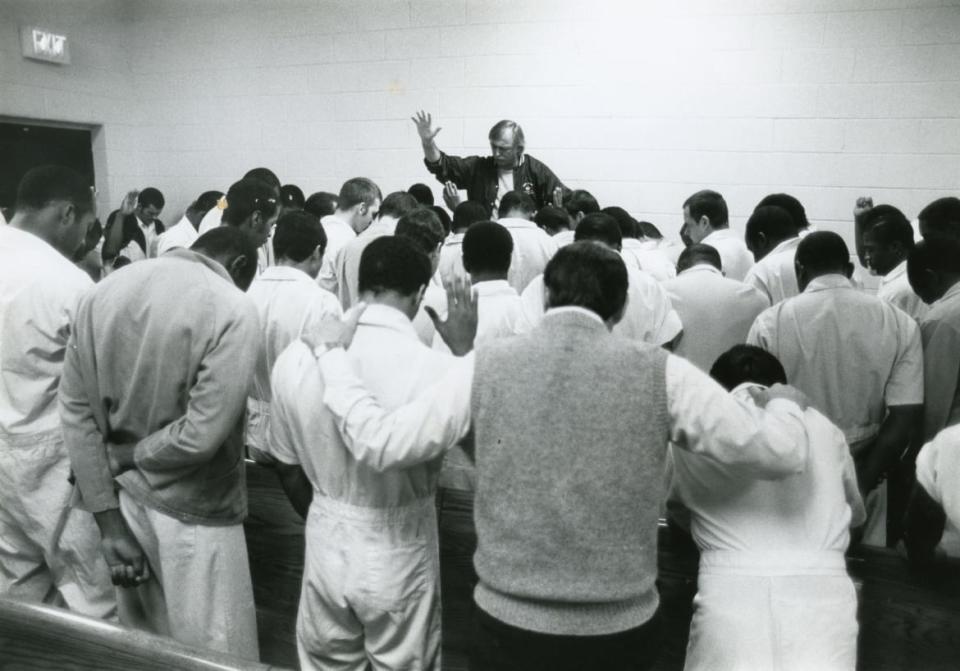How a Champion Surfer Became a Notorious Jewel Thief and Murderer

Jack Roland Murphy, better known by his headline-friendly moniker “Murf the Surf,” was a criminal who pulled off America’s biggest jewelry heist, stealing the Star of India sapphire—among several other valuables—from Manhattan’s Museum of Natural History on Oct. 29, 1964. That swindle attracted national attention and turned Murf into a media darling, abetted by his brashness, good looks, and defiant lack of repentance. He was a beach boy-turned-hoodlum with style and attitude to burn, and his exploits were grand enough to beget a 1975 feature film (Murf the Surf) about his legendary burglary.
Documentarian R.J. Cutler’s Murf the Surf (Feb. 5) details the origins of his subject’s illicit career as well as his historic robbery, albeit with little of the flashy flair one might expect. Enthusiasm is muted throughout this four-part docuseries, and the reason becomes clear when it gets to Murf’s second major brush with the law: the 1967 Florida murders of Terry Rae Frank and Annelie Mohn, two twentysomething secretaries who had stolen half a million dollars in stocks from their Los Angeles employer.
Murf was convicted of killing Frank in 1969 and received two life sentences plus 20 years for the slaying as well as another robbery and a prior shootout with police. Murf the Surf doesn’t take that offense lightly, even if Murf himself spent the back half of his life (until his death in 2020) trying to downplay his involvement in the double homicide while making a case for his holy rehabilitation in prison. During his stint in a Florida jail, Murf found Jesus, and amazingly, the parole board—bolstered by testimonies from the warden and others—granted him a release in 1986, thereby giving him the opportunity to use his final decades preaching his “born again” gospel and, in doing so, hiding his role in a murder of grisly proportions.
Murf the Surf, produced by Ron Howard and Brian Grazer’s Imagine Entertainment, is thus not your typical true-crime series. Cutler’s streaming show is, at its core, the story of a disgusting man who did many bad things—culminating with a heinous atrocity—and then habitually dismissed his past via a carefully manicured salvation narrative. While it begins in relatively straightforward fashion, by its conclusion, it damningly exposes the real Murf while calling into question a culture that celebrated him and a legal system that set him free.

Growing up in a dysfunctional home led by a domineering father, Murf was an athlete (he won a tennis scholarship to the University of Pittsburgh) and a violinist who, upon moving to Miami, became a championship surfer. Working as a hunky beach boy at Miami resorts, Murf took swiftly to robbing customers; soon enough, he was pulling off major heists with various cohorts. When he heard about the Museum of Natural History’s enormous jewelry collection, he and accomplice Allan Kuhn couldn’t resist. They successfully made off with the priceless haul, only to then get busted in Florida when a woman in their company started talking and word got back to the law enforcement officers hot on their trail.
Twenty-one months in prison later, Murf was back on the street partaking in more criminal activity. In 1967, he and accomplice Jack Griffith went for a boat ride in Whiskey Creek Canal with Mohn and Frank. When the women threatened to talk to the FBI if Murf and Griffith didn’t help them move their stolen stocks, the men killed them. Murf claimed that he only drove the boat, but the slayings were so severe—the women were bludgeoned, repeatedly slashed in the stomach, shot, and tied up with cinder blocks before being thrown overboard—that the presiding jury didn’t buy Murf’s plea of not guilty by reason of insanity. Though it was impossible to determine precisely what respective roles Murf and Griffith played in this massacre, Murf the Surf convincingly contends that neither were innocent, and Murf’s preternatural arrogance only supports the case against him.
The Story of the World’s Richest Dog Involves a Shocking Number of Sex Parties
The Murf portrayed by Cutler is a man with an ego a mile wide and a consuming desire to be the center of attention. Behind bars, the only way to reenter the spotlight and secure his liberation was by finding God, which he did through a partnership with ministries and an appearance on Pat Robertson’s The 700 Club. Murf the Surf allows supporters and critics to opine on the legitimacy of this transformation. In the end, however, it doesn’t buy the convict’s line. In a blistering closing episode, it lays bare Murf’s habitual opportunism, epitomized by his promotion of a personal redemption saga designed to wash away (and mask) his homicidal sins, and—in his dreams—to achieve the Hollywood stardom he craved, thanks to a movie script he wrote with longtime friend Domenic Fusco.

Murf the Surf doesn’t overtly articulate its negative opinion of Murf, instead conveying it through a dogged focus on his role in Frank and Mohn’s murders and its subtly dispassionate aesthetic approach. Devoid of on-camera talking heads, the series tells its tale through a wealth of archival and stock footage (often in split-screen) embellished by audio interviews with relevant individuals. The disembodied nature of those voices, coupled with Cutler’s avoidance of glitzy editorial tricks and rousing soundtrack cuts, dampens any potential electricity. There are few vicarious thrills to be had from watching Murf strut about in news segments or sermonize to his incarcerated flocks, as the director consistently reminds viewers that the killer and thief was scary, unrepentant, and untrustworthy.
In its finale, Murf the Surf depicts a legal system that’s so taken with the notion of rehabilitation (especially of a religious sort) that it forgets that first-degree murderers are in prison for life, first and foremost, as a form of punishment. That anyone might let a killer like Murf walk free simply because he supposedly found God is merely one more sick joke in a story full of them.
Get the Daily Beast's biggest scoops and scandals delivered right to your inbox. Sign up now.
Stay informed and gain unlimited access to the Daily Beast's unmatched reporting. Subscribe now.

